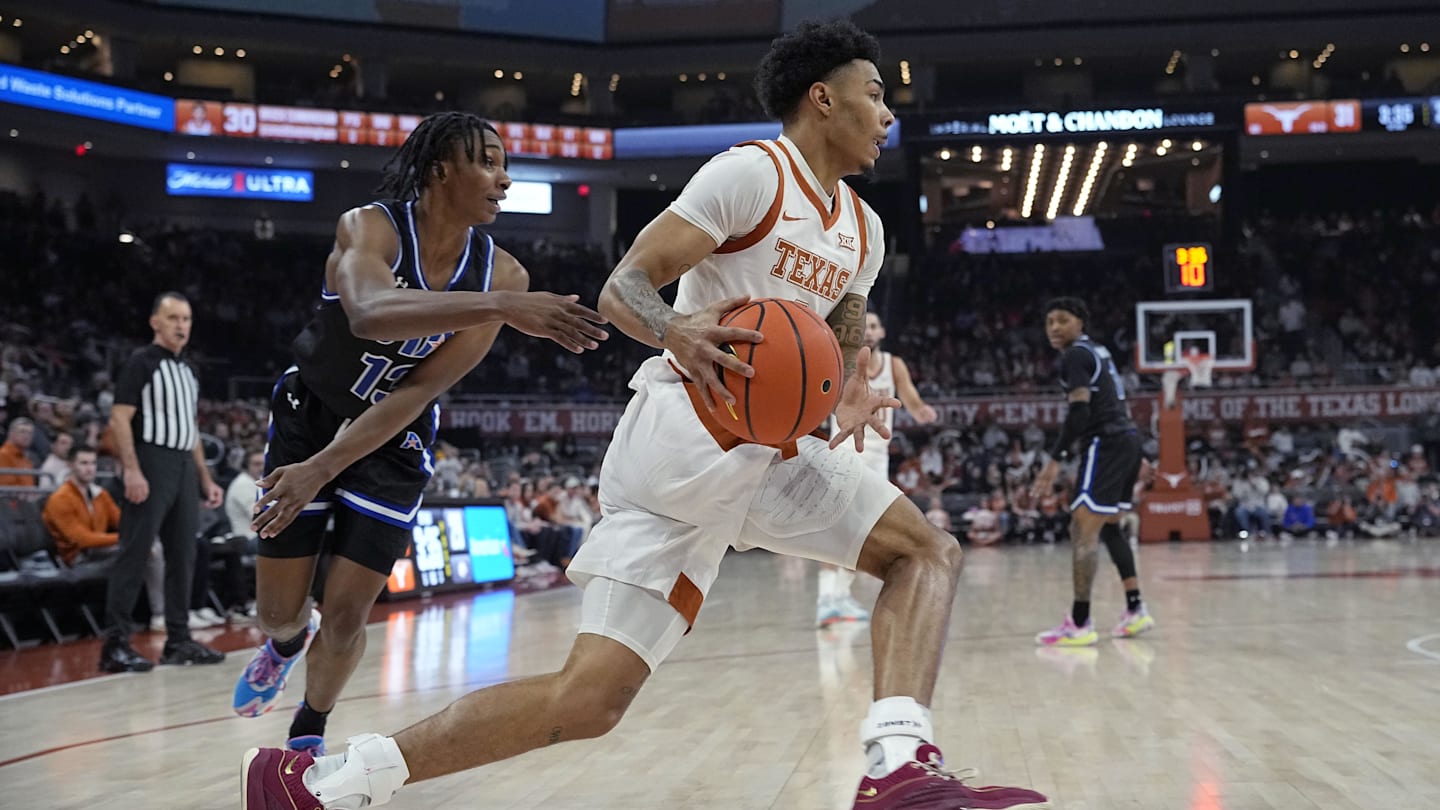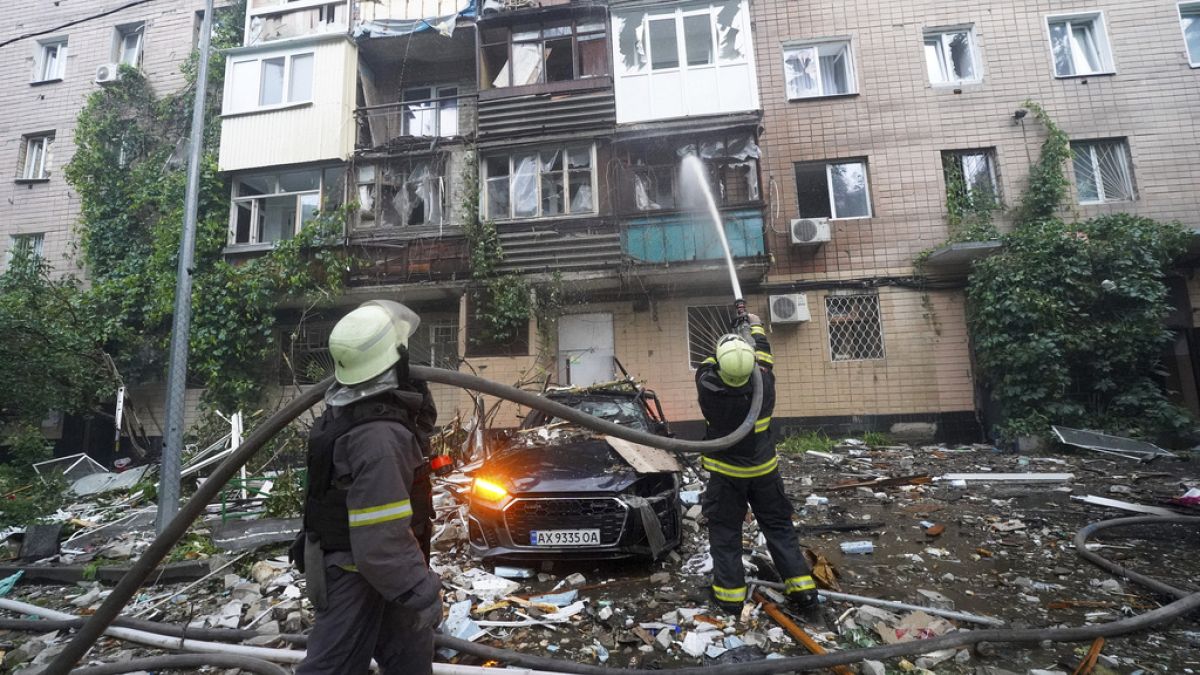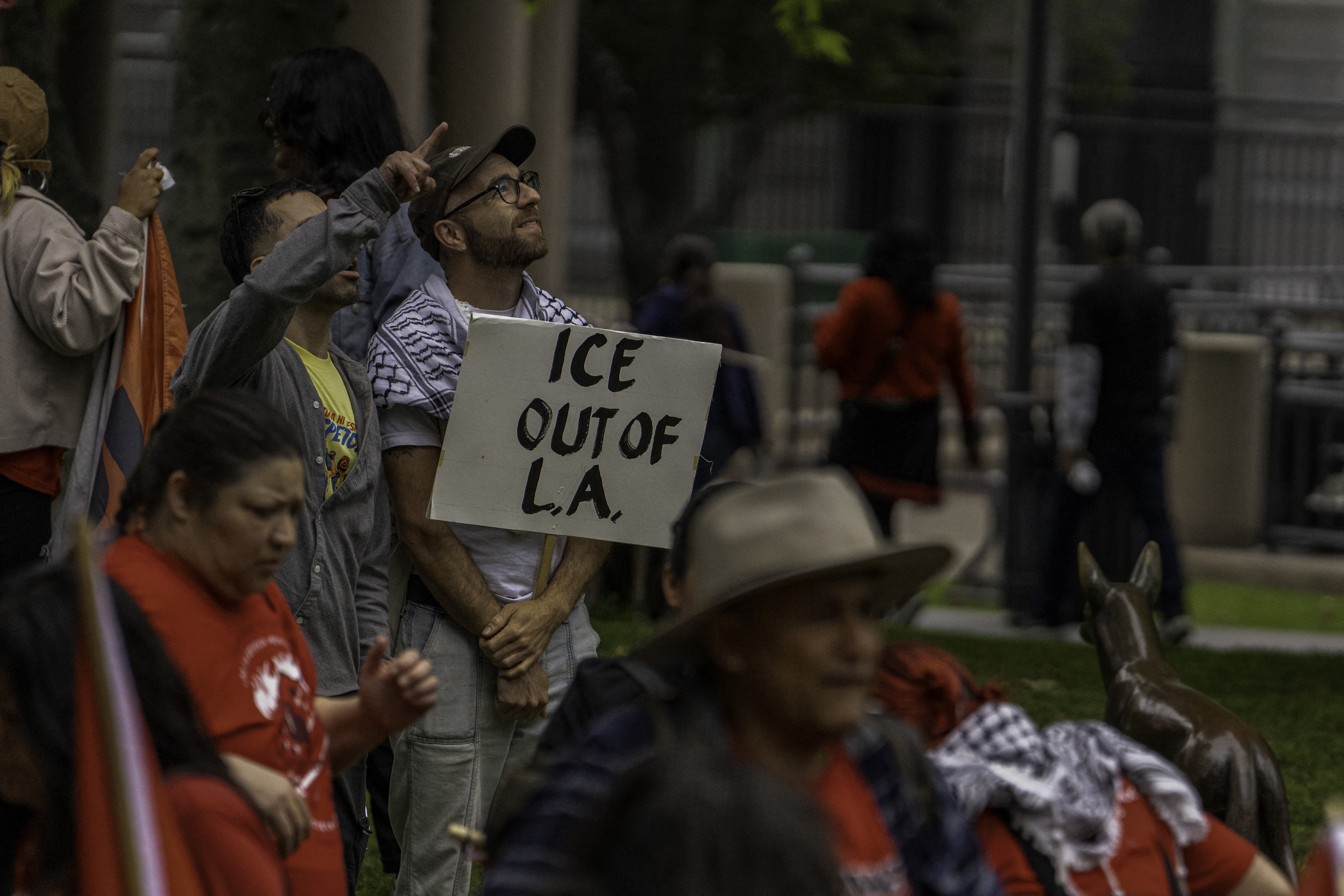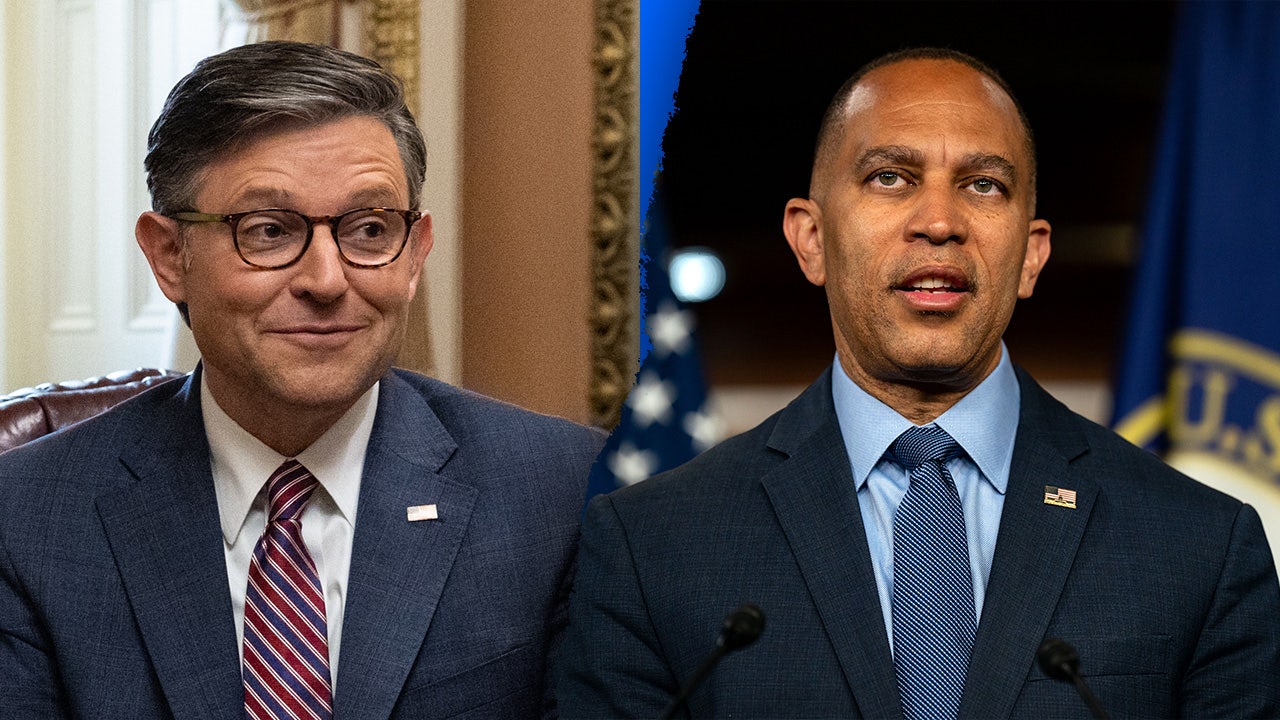Business
Column: Workers are keeling over from extreme heat while Big Business battles safety regulations

In the summer of 2022, UPS driver Esteban Chavez Jr. died from what his family maintains was heat stroke suffered while delivering packages in Pasadena. In June, Postal Service letter carrier Eugene Gates Jr. collapsed during his route, and later died at a hospital.
Farmworker Efraín López García died last month after working the fields in South Florida. Also last month, a utility lineman collapsed and died in Marshall, Texas, after working in a heat and humidity environment equivalent to 100 degrees.
Those are dispatches from the battle against the punishing heat that has enveloped much of the United States this summer. It’s a battle in which men and women with no choice but to work outdoors are on the front lines. In many occupations and many parts of the country, they’re likely to be taking serious casualties.
Employers have a legal and moral responsibility not to assign work in high heat conditions without protections in place for workers where they could be literally worked to death.
— U.S. Dept. of Labor
Figures for this summer and last haven’t yet been published by the Bureau of Labor Statistics, but its reckoning for 2011 and the prior 10 years is horrifying enough: 436 workplace deaths over that 11-year period, including 36 in 2021.
The figures are almost certainly underestimated, because heat-related workplace deaths are often attributed to some other cause — cardiac conditions or accidents, for example. The toll is almost certain to be higher this year because of the unprecedented severity of the summer heat wave.
The crisis didn’t come as a surprise. In February, the attorneys general of California, New York, Illinois, Maryland, Massachusetts, New Jersey and Pennsylvania asked the federal Occupational Safety and Health Administration to issue an emergency standard for heat exposure by May 1.
They projected (accurately) that heat this summer would outmatch the last two summers, and pointed out that tens of millions of workers, half of whom were people of color, worked in conditions that “put them at grave danger of injury, illness, or death from heat exposure.”
They said OSHA mandates should encompass access to water, shade and rest periods whenever the temperature exceeded 80 degrees. OSHA turned them down, responding that emergency standards would entangle the agency in litigation from industry lobbies, distracting from its efforts to craft a permanent regulation and probably resulting in “no tangible results for workers.”
Still, President Biden recognized the urgency of action by announcing several steps on July 27 to protect workers. Among them, he directed acting Labor Secretary Julie Su to issue a heat hazard alert aimed at reemphasizing to employers the existing right of workers to be protected from heat sickness. “Employers have a legal and moral responsibility,” the alert says, “not to assign work in high heat conditions without protections in place for workers where they could be literally worked to death.”
They include requirements that employers provide adequate cool water, rest breaks and shade or a cool rest area for employees; give new or returning employees the chance to acclimatize — that is, to become used to working in hot temperatures — and to recognize the symptoms of heat sickness. Su’s agency is also vowing to step up enforcement of safety rules on construction sites and farms, the most heatstroke-prone locations.
Biden’s directive aimed to fill a vacuum: No federal law specifically imposes heat safety standards for workplaces. Five states do — California, Oregon, Washington, Colorado and Minnesota.
California was the first state in the nation to implement heat standards for workers, in 2006. They require access to fresh water at all times and mandate shade when the temperature climbs past 80 degrees. Agricultural workers must be granted one cool-down rest period of at least 10 minutes every two hours when the temperature exceeds 95 degrees.
The missing element in California’s rules is coverage for indoor workers, such as those employed in vast inland warehouses that often have no cooling equipment other than fans, which merely move the stifling heat around. The state Occupational Safety and Health Administration has been working on rules for indoor workplaces since 2017; the latest draft, which requires that they be cooled to less than 87 degrees, will be subject to public comment through Aug. 22.
The California rules are enforced by the chronically underfunded and understaffed Cal/OSHA, which has a lot on its plate. Its jurisdiction includes not only industrial workplaces but amusement rides, elevators, mines, tunnels and asbestos and carcinogen monitoring.
That hasn’t stopped employers from grousing about the state regulations. The Construction Industry Safety Coalition has called the state’s rules “confusing and ineffective,” though its complaints sound a bit overwrought.
The builders were especially irked by a state rule that sources of drinking water be “located as close as practicable to the areas where employees are working.” That’s a “subjective standard,” the construction lobbyists complained, yet Cal/OSHA “regularly cites employers” for failing to meet it.
In his July 27 announcement, Biden referred to a heat-safety rulemaking procedure launched in 2021 by the federal OSHA. But there lies the rub, because Big Business lobbies have done everything in their power to challenge the OSHA process and ensure that whatever standard finally emerges will be shot through with loopholes and diluted into insignificance.
The power of those lobbies was made unmistakably clear in Texas on June 16, when Republican Gov. Greg Abbott signed a bill nullifying city and county ordinances mandating water and shade breaks for outdoor workers.
Among them were ordinances enacted in Dallas and Austin requiring 10-minute breaks every four hours for construction workers. The new state law, which goes into effect Sept. 1, also prohibits municipalities from enacting any such ordinances in the future.The utility worker in Marshall died six days after Abbott signed the law.
You’ve heard all the arguments that Big Business has mustered against the OSHA rule-making before. They’re no different from the arguments raised against any new regulation: One-size-fits-all rules never work, they’re too expensive, they’re “onerous,” they duplicate rules we already have, they require years of further study, etc., etc., etc.
Then there’s this all-purpose defense employers cite against any and all workplace regulations: We care deeply about our workers, so what’s the problem? Or as the American Farm Bureau Federation puts it, “Farmers and ranchers value the agricultural workforce.”
Never mind that government figures show that farming, and its associated occupations in fishing and forestry, had the second-highest toll in heat deaths in 2017-2020, exceeded only by the construction trades. (Says the Construction Industry Safety Coalition: “Workplace safety and health is a priority for all members of the Coalition, and each is committed to helping create safer construction jobsites for workers.”)
The business argument, as embodied in statements by the U.S. Chamber of Commerce and other industry lobbies, is that heat regulations are fine, as long as employers don’t have to pay the costs, the regulations don’t interfere with their ability to drive employees as hard as they can and the government is forced to waste years on extensive studies to support any new rules.
Think I’m kidding? Look at the eight-page comment about the proposed federal heat rule submitted to OSHA in January 2022 by Marc Freedman of the U.S. Chamber of Commerce.
Freedman started by asserting that the factors contributing to heat injuries and heat sickness are “so varied, so often unpredictable and so often unknown to employers” that determining when a rule should apply is almost impossible.
He asks, when is “hot” really “hot”? He writes, “There is no data of which we are aware that indicates at what point … the risk of such illness becomes significant.” He quotes from a 2020 OSHA hearing in which a U.S. Postal Service lawyer got an expert to acknowledge that it was impossible to say exactly how many workers out of 1,000 would be sickened by laboring in 100-degree heat.
“From the data I’ve seen,” the expert said, “it’s more likely that employees will become sick on a 100-degree day compared to an 80-degree day. But I can’t give you an exact number.”
To the Chamber, this pretty much showed that there’s no point in writing a heat-safety rule because one can’t be crafted to meet an “objective” standard — at least not unless OSHA is required to “commission or request additional studies” — which obviously would delay a rule for years.
Then there’s the cost argument. “For many of our members,” Freedman wrote, “measures such as acclimatization and work-rest cycles threaten to directly and substantially impair their employees’ productivity and therefore their employers’ economic viability.” It’s a harsh choice, isn’t it: Work till you drop, or go on the unemployment line.
Is there any relief for the working man or woman from the heat? The record shows that government is a thin reed to lean on — but also that one remedy for heat-related injury and illness is unionization. A study published earlier this year by researchers at the universities of Connecticut and North Carolina found that in 2017 through 2020, more than 80% of exertion-related worker fatalities (a category that includes heat-related deaths) were among nonunionized workers.
Indeed, it was the Teamsters union that forced United Parcel Service to agree to install air conditioning in its sweltering delivery trucks, as part of the contract reached last month. Even in that case, the agreement took years of negotiations and an imminent strike threat to achieve — leaving the question of how many more workers will have to succumb to the heat before the rest of Big Business wakes up to its responsibilities.

Business
Jobs at the Port of Los Angeles are down by half, executive director says

Job opportunities at the Port of Los Angeles are dwindling as President Trump’s steep tariffs take a hit on global trade and a major economic engine for the regional economy.
Nearly half of the longshoremen who support operations at the port went without work over the last two weeks, Gene Seroka, executive director of the Port of Los Angeles, said in an interview.
The port processed 25% less cargo than forecast for the month of May, he said.
Trump’s tariffs have drastically stemmed the flow of goods into the U.S., driving down activity at the neighboring ports of L.A. and Long Beach, which collectively processed more than 20 million 20-foot-long cargo units last year.
The two ports are the largest in the country and provide jobs for thousands of dockworkers, heavy equipment operators and truck drivers.
But work has fallen off sharply in recent weeks. Over the last 25 work shifts, only 733 jobs were available for 1,575 longshoremen looking for work.
“They haven’t been laid off, but they’re not working nearly as much as they did previously,” Seroka told The Times. “Since the tariffs went into place, and in May specifically, we’ve really seen the work go off on the downside.”
Marine terminal operators post available work opportunities, known as job orders, on a digital board at the port three times a day. Longshoremen can review the job orders at each shift and bid on the jobs they want to take. If there are more longshoremen than job orders, a portion of workers will go without pay.
The average of 733 job orders posted over the past 25 shifts, which is equal to roughly two weeks, is unusually low.
Ordinarily, between 1,700 and 2,000 job orders are posted during a typical day shift, and between 1,100 and 1,400 are posted during a standard night shift.
Seroka attributed the decrease in job opportunities to lower cargo volume moving through the port.
In May, 17 cargo ships canceled their planned trips to Los Angeles amid uncertainty over duties the Trump administration imposed worldwide.
Although May is typically a busier month than April, this past May saw 18% less cargo processed than the month prior, according to port data.
The falloff comes during a critical time in advance of the Christmas shopping season, orders for which are usually placed before July 1.
Conditions are not expected to significantly improve anytime soon.
“The June numbers that we’re projecting right now are nowhere near where they traditionally should be,” Seroka said.
An average of five ships have entered the port each day over the last week. This time of year, there would typically be between 10 and 12 ships in the port each day.
“The drop in cargo volume caused by Trump’s tariffs will mean empty shelves when products don’t reach our stores, rising prices on everything from groceries to clothes to cars, and undoubtedly, more Americans out of work,” U.S. Sen. Alex Padilla of California said in a news conference last month.
The decline in shipping has broader ripple effects on L.A.’s logistics economy.
A 2023 report found that the ports of Los Angeles and Long Beach contributed $21.8 billion in direct revenue to local service providers, generating $2.7 billion in state and local taxes and creating 165,462 jobs, directly and indirectly.
A decline of just 1% in cargo to the ports would wipe away 2,769 jobs and endanger as many as 4,000 others, the study found.
Union officials could not be reached for comment on Friday but had previously predicted job losses for their members.
“Some of the workforce will not be getting their full 40 hours a week based on the loss of cargo,” Gary Herrera, president of the longshoremen union ILWU Local 13, warned last month.
“That is going to have an effect on the work opportunities for not just us, but for truck drivers, warehouse workers and logistics teams,” he said.
The slowdown in activity at the ports of L.A. and Long Beach has also spread into surrounding communities. Businesses in the area rely on a robust community of port workers to frequent their establishments.
“We’re starting to hear from small businesses and restaurants in the harbor area that their customer patronage is trending downward,” Seroka said. “Outside of COVID, this is the biggest drop I’ve seen in my career.”
Business
Venture capital investment is rising in Los Angeles — and not just for AI startups
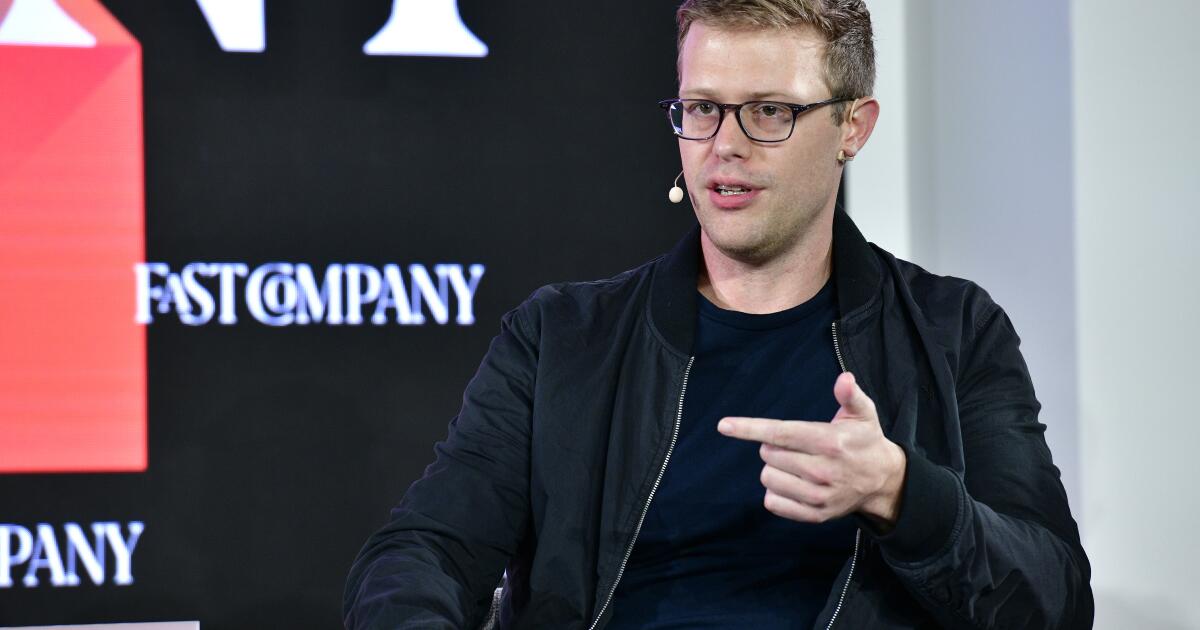
Early this year, private equity firm Blackstone bet big on the future of artificial intelligence by investing $300 million in a Chatsworth company that’s been around for more than two decades.
The company, DDN, helps businesses store and manage the massive trove of data that powers AI systems — the lifeblood needed for chatbots, self-driving cars and more. DDN’s high-profile customers include chipmaker Nvidia, Elon Musk’s AI startup xAI, Google Cloud and Ford. DDN, short for DataDirect Networks, has roughly 1,000 employees.
“They have a trillion dollars of assets under management, and it’s a company that we thought would really move the needle for us in terms of extending our reach,” said Jyothi Swaroop, DDN’s chief marketing officer.
The investment was among the largest this year in the Greater Los Angeles region, which remains a hot spot for investments in both old and new tech companies poised for growth.
All told, venture capital investors and private equity firms poured $3.1 billion to fund 144 deals in the L.A. area in the first quarter of this year, up 15% from a year ago, according to research firm CB Insights. The area encompasses Los Angeles, Ventura, Orange, Riverside and San Bernardino counties.
While investment levels can fluctuate, funding in the greater L.A. region has steadily increased since 2023, when investment cooled following the collapse of the cryptocurrency exchange FTX.
Along with AI, investors also financed startups and established businesses in healthcare, e-commerce and defense technology, underscoring how investment in the L.A. market has diversified in recent years beyond ad tech businesses and video apps.
“Today it’s going into much more ambitious projects,” Mark Suster, a general partner at Santa Monica-based Upfront Ventures. “It’s going into satellites, alternate energy, national defense, drones, shipbuilding and pharmaceutical drug discovery. So it’s a lot more exciting than it ever has been.”
Los Angeles-area companies that received the most money in the first quarter include Torrance-based defense company Epirus with $250 million; and Thousand Oaks-based Latigo Biotherapeutics, which received $150 million, according to CB Insights. Latigo Biotherapeutics develops non-opioid pain treatments, while Epirus makes technology that helps defend against attacks from drone swarms.
Economic consulting firm Econic Partners raised the most funding with $438 million, according to CB Insights, which relied on a report filed with the U.S. Securities and Exchange Commission. Econic disputed the total, saying it raised nine figures in the first quarter, but the company declined to say how much.
Masha Bucher, founder and general partner at Day One Ventures, said she views El Segundo as the most promising hub for “deep tech” startups tackling complex issues, such as, water scarcity.
Businesses in the L.A. area have access to a highly qualified workforce from aerospace and defense tech companies. The tech hub known as Silicon Beach also is close to the airport, making it easy for entrepreneurs to hop on a plane to raise funding in San Francisco.
“There is a power of community, and it’s definitely like a power spot on the map,” Bucher said. The firm’s investments include various AI startups and an eye-scanning crypto project backed by OpenAI’s Sam Altman in which people verify they’re human.
Investors aren’t interested in only AI, however. Culver City-based Whatnot raised $265 million, one of the biggest deals in the L.A. area this year. The live shopping app allows people to buy and sell items such as clothing and collectibles. Potential customers can ask questions about products in real-time, find deals and bid for products shown in live videos.
Whatnot says it surpassed more than $3 billion in sales in 2024, and the company expects that figure to double this year. The startup, founded in 2019, says it isn’t profitable yet, but the TikTok rival has shown investors it’s growing fast.
“Live and social shopping has the potential to be an absolutely monstrous market,” Whatnot Chief Executive Grant LaFontaine said.
The company has roughly 750 employees across the United States and Europe. The funding will help market Whatnot to attract more users and hire people to improve the shopping experience, he said.
Like other businesses, Whatnot uses AI for customer service and to moderate content on the platform.
“I tend to be sort of a purist, which is that consumers don’t care about AI. They care about problems being solved,” LaFontaine said.
Businesses have been using AI long before the rising popularity of chatbots such as ChatGPT that can generate text, images and code.
But the frenzy surrounding what’s known as generative AI has meant that various industries are confronting how technology will disrupt the way they live and work.
Not surprisingly, investor interest in AI drove much of the nation’s venture capital commitments in the first quarter. San Francisco-based OpenAI secured the largest funding round of $40 billion, placing its valuation at $300 billion, according to CB Insights.
“There’s a ton of opportunity to rewrite the playing field on which people do business in everything from across verticals, across industries,” said Jason Saltzman, head of insights for CB Insights. “Everyone recognizes the promise, and … no one wants to miss out on the promise.”
Globally, $121 billion of venture capital was raised in the first quarter, with 20% of the deals received by AI companies — the highest amount ever, according to CB Insights. Nationally, $90.5 billion in venture capital was raised last quarter, with the bulk of the money going toward startups in Silicon Valley, which brought in $58.9 billion, the research firm said.
San Francisco has experienced a surge in AI startups expanding or opening up offices, drawn to the city’s swath of talent and the Bay Area’s universities. AI leaders including OpenAI and Anthropic also are based there.
OpenAI said it would use the money raised in the first quarter toward building its tools and investing in talent.
“People understand that this is a transformative technology,” said Chris Lehane, OpenAI’s vice president of global affairs in an interview. “It’s going to permeate virtually every aspect of life.”
Silicon Valley remains the far leader in venture capital AI investments, but other cities such as New York have attracted AI funding. There’s also global competition from countries such as China. As legislators weigh whether to introduce laws that could regulate AI, some tech lobbying groups have raised concerns on how those bills could affect innovation in the state.
Suster said he doesn’t think venture capital dollars will leave California.
“The opportunity set is so great here,” Suster said. “Do we occasionally get backwards-looking bills that try to overregulate how industry works in California? Of course, we do. We find ways to work around them.”
Business
Paramount chair Shari Redstone has been diagnosed with thyroid cancer
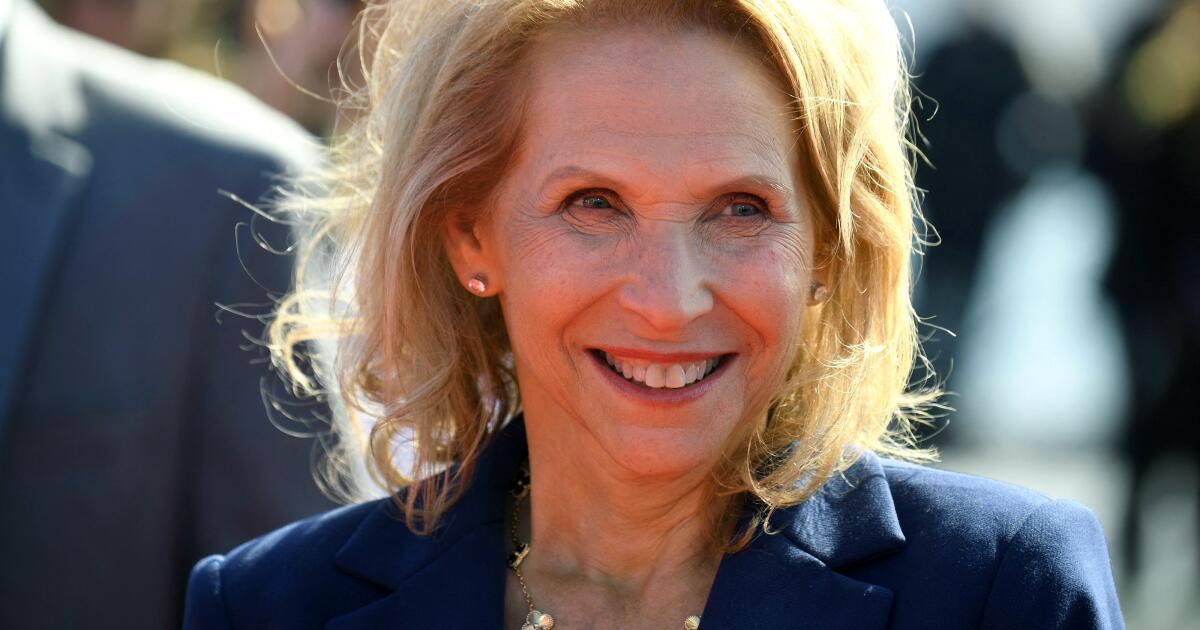
Paramount Global chairwoman and controlling shareholder Shari Redstone is battling cancer as she tries to steer the media company through a turbulent sales process.
“Shari Redstone was diagnosed with thyroid cancer earlier this spring,” her spokeswoman Molly Morse said late Thursday. “While it has been a challenging period, she is maintaining all professional and philanthropic activities throughout her treatment, which is ongoing.
“She and her family are grateful that her prognosis is excellent,” Morse said.
The news comes nearly 11 months after Redstone agreed to sell Paramount to David Ellison’s Skydance Media in a deal that would end the family’s tenure as major Hollywood moguls.
However, the government’s review of the Skydance sale hit a snag amid President Trump’s $20-billion lawsuit against Paramount subsidiary CBS over edits to an October “60 Minutes” broadcast.
Redstone, 71, told the New York Times that she underwent surgery last month after receiving the diagnosis about two months ago. Surgeons removed her thyroid gland but did not fully eradicate the cancer, which had spread to her vocal cords, the paper said.
She continues to be treated with radiation, the paper reported.
The Redstone family controls 77% of the voting shares of Paramount. Her father, the late Sumner Redstone, built the company into a juggernaut but it has seen its standing slip in recent years. There have been management missteps and pressures brought on by consumers’ shift to streaming. The trend has crimped revenue to companies that own cable channels, including Paramount.
Redstone has wanted to settle the lawsuit Trump filed in October, weeks after “60 Minutes” interviewed then-Vice President Kamala Harris. Trump accused CBS of deceptively editing the interview to make Harris look smarter and improve her election chances, a charge that CBS has denied.
The dispute over the edits has sparked unrest within the company, prompted high-level departures and triggered a Federal Communications Commission examination of alleged news distortion.
The FCC’s review of the Skydance deal has become bogged down. If the agency does not approve the transfer of CBS television station licenses to the Ellison family, the deal could collapse.
The two companies must complete the merger by early October. If not, Paramount will owe a $400-million breakup fee to Skydance. Redstone, through the family’s National Amusements Inc., also owes nearly $400 million to a Chicago banker and tech titan Larry Ellison, who is helping bankroll the buyout of Paramount and National Amusements.
-

 News1 week ago
News1 week agoVideo: Faizan Zaki Wins Spelling Bee
-

 News1 week ago
News1 week agoVideo: Harvard Commencement Speaker Congratulates and Thanks Graduates
-

 Politics1 week ago
Politics1 week agoMichelle Obama facing backlash over claim about women's reproductive health
-
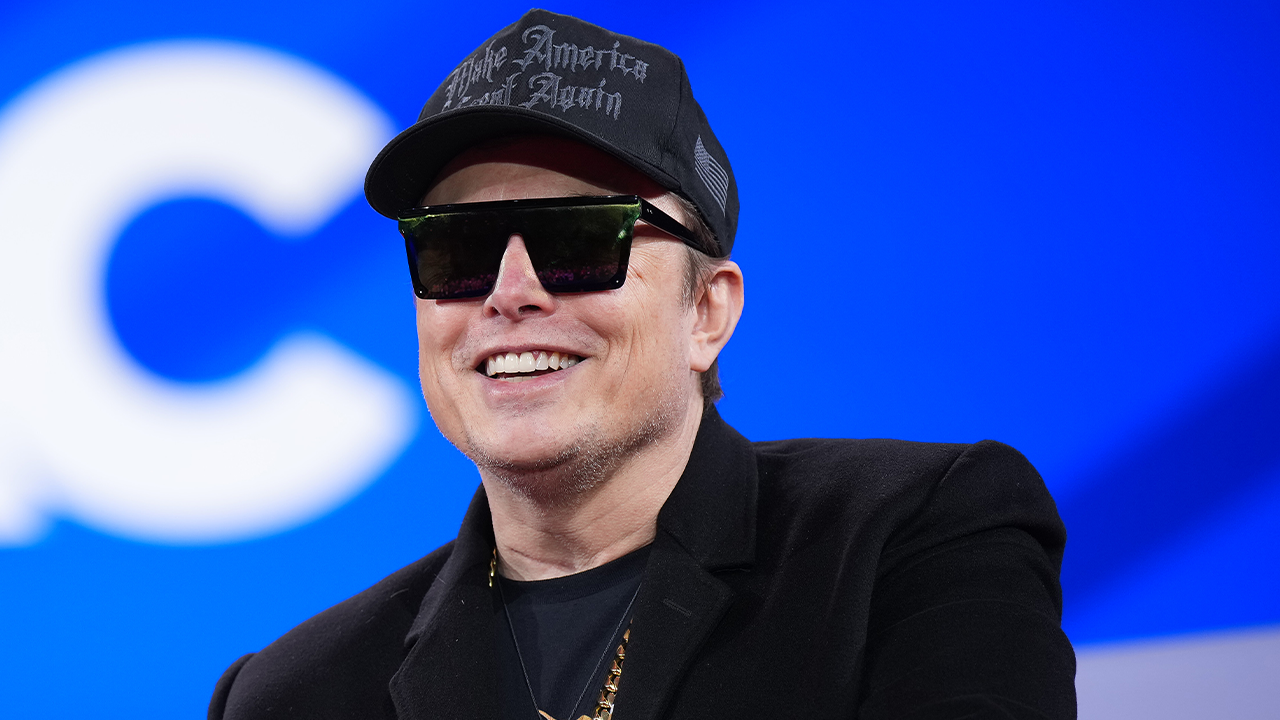
 Politics1 week ago
Politics1 week agoMusk officially steps down from DOGE after wrapping work streamlining government
-

 Technology1 week ago
Technology1 week agoAI could consume more power than Bitcoin by the end of 2025
-

 News1 week ago
News1 week agoPresident Trump pardons rapper NBA YoungBoy in flurry of clemency actions
-

 Technology1 week ago
Technology1 week agoSEC drops Binance lawsuit in yet another gift to crypto
-

 Technology1 week ago
Technology1 week agoOpenAI wants ChatGPT to be a ‘super assistant’ for every part of your life

